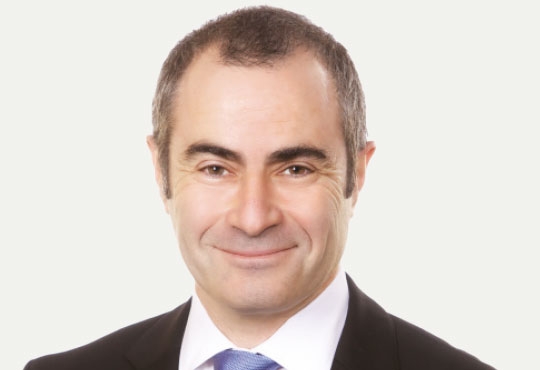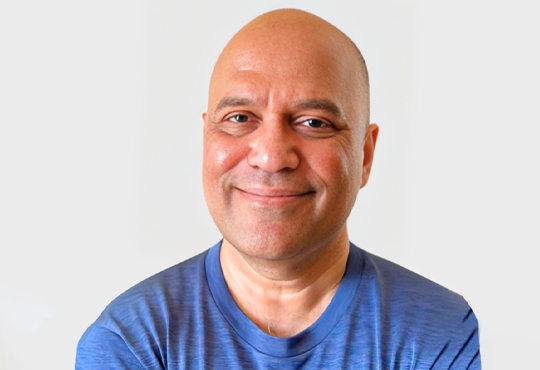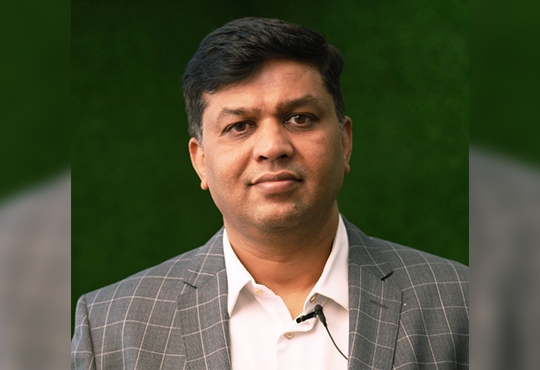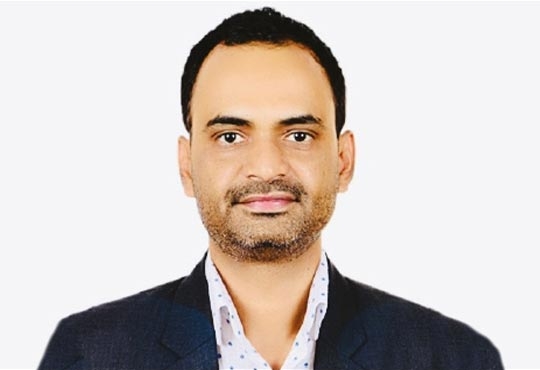
Unlocking Efficiency: The Future of Smart Metering and IoT Integration
Ganesh Lakshminarayanan, CEO – India, Airtel Business | Thursday, 28 March 2024, 05:04 IST
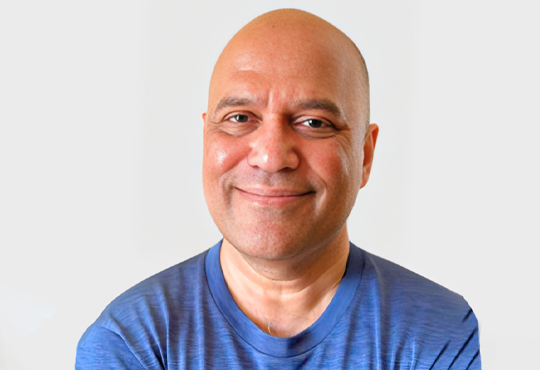 Ganesh Lakshminarayanan, CEO – India, Airtel Business brings over two decades of seasoned expertise, He previously occupied leadership roles at Capillary Technologies and Dell prior to his tenure at Airtel. He has been elected twice as a member of the NASSCOM Executive Council and FICCI, showcasing his dedication to industry leadership and advocacy. In an exclusive interview with CIOTechOutlook, he elaborates how cellular networks are shaping the development of IoT technologies.
Ganesh Lakshminarayanan, CEO – India, Airtel Business brings over two decades of seasoned expertise, He previously occupied leadership roles at Capillary Technologies and Dell prior to his tenure at Airtel. He has been elected twice as a member of the NASSCOM Executive Council and FICCI, showcasing his dedication to industry leadership and advocacy. In an exclusive interview with CIOTechOutlook, he elaborates how cellular networks are shaping the development of IoT technologies.
How Cellular IoT is shaping the smart metering industry, and what developments do you foresee in its evolution?
Cellular IoT operates on the same principles as our core mobile business. Basic idea is that a cellular network which enables mobile phone connectivity, is also capable of connecting devices, wherever they are. This can be done through various radio technologies which have evolved over time, namely 2G, 4G, 5G and now NB-IoT or Narrow Band IoT, which is designed for IoT specific use cases.
As India’s economy is growing, businesses across sectors are witnessing IoT-led transformations. In industries like Fintech and Logistics, IoT has existed since long with Point of Sale and Vehicle Tracking devices. In other industries like Healthcare, Manufacturing and Auto, it is coming up in a big way now.
What role does IoT play in addressing the challenge of smart meters infrastructure and designing customized smart metering use cases?
Smart meter rollouts are happening at a very rapid pace. Currently, more than 222 million smart meters have been sanctioned. Of these 222 million meters, around 109 million have been awarded and only around 9-10 million meters have been made live. This means that there remains a tremendous amount of work to be done.
Smart metering ecosystem mandates real time transmission of data from these meters to the cloud for data analytics and demand-supply forecasting. Given the geographical and topographic spread for deployment of meters across the country, licensed cellular networks emerge as the most feasible communication infrastructure for connecting these meters.
Cellular IoT provides utilities with a standards-based communication offering for connecting the meters which ensures there are no interoperability challenges between different service providers. This also safeguards the deployments from vendor specific proprietary implementations which may prove to be unviable in the long run. Another key benefit of licensed cellular networks is the plug and play nature of the offering. These networks do not require customers to incur any upfront capex for network roll-out, and eliminates costs, challenges associated with deploying, managing and operating these proprietary networks. We offer unmatched, secure and reliable network coverage across NB-IoT, 4G and 2G ensuring seamless data transfer between devices.
Smart metering deployments entail long term contracts with a cumulative deployment and service period of 10 years; thus, cellular communication technologies provide the right mix of security, reliability and commercial viability required by SIs which is bidding for these contracts.
In what ways are discoms leveraging smart metering technology to optimize their operating costs, and what impact has this had on their bottom line?
Utilities in India are undergoing a digital transformation. Government of India has laid down its plans of implementing a pan-India Smart Grid wherein 250 million conventional meters will be replaced with smart meters. This is aimed at meeting India’s future energy demands while curtailing Aggregate Technical and Commercial (AT&C) losses. This transformation is expected to transform the way in which utility services are delivered to and consumed by citizens.
The first step is this journey is to get smart meters in 250 million homes. That is the starting point of digitization of India’s power sector, and the establishment of pan India smart grid. Once the 250 million meters come through, we will see the demand supply mismatch ease up at the consumer end. This will ease up the load on grid and generation companies will be able to accurately produce/ supply to the grid as per demand. And third step is democratization of consumption with initiatives such as Time of Day pricing resulting in better offtake of renewable energy.
How are discoms deploying solutions in collaboration with technology providers for smart metering purposes?
Smart metering as a technology has four key components. First is the meter hardware, second is the Network provider or the communications provider. Third is the cloud where the storage and analytics happen. Fourth is the application layer where all the intelligence resides i.e., Head End System (HES) for data ingestion, Meter Data Management (MDM) for data analytics and integration with DISCOMs system. The way the ecosystem works is that the SI can choose to bundle all this with one provider such as Airtel or they may award these independently.
What key advancements and innovations do you anticipate will shape the future of smart meters?
Our view is that 2024 is expected to be a watershed year for smart metering with deployments happening across nearly all states. There is a determined policy push and stakeholder buy in for the initiative at all levels. Smart meters don’t solve all the problems of state utilities but they are a significant first step towards better financial health. These meters help DISCOMs reduce T&D losses and operational expenditure, allows for better demand forecasting, and ultimately increase in revenue. The mandate of Revamped Distribution Sector Scheme (RDSS) to implement prepaid smart meters is a game changer and will improve the quality and reliability of power supply to consumers. Being an incentive-based scheme RDSS targets financial sustainability of DISCOMs while providing support for upgradation of the distribution infrastructure and smart metering systems.
Another important and pro-consumer measure announced by the Government last year is the planned introductions of Time of Day (ToD) tariff structure which can help consumers reduce their electricity bills by effective planning of their consumption during non-peak hours. ToD tariff will also improve the management of renewable generation fluctuations, and the system load factor by reducing the demand on the system during peak period.
CIO Viewpoint
Big Data and the Big Opportunities
By Bipin Kumar, Head - IT & Projection at Cinèpolis India
Optimized Networks For An Agile Workplace
By Steve Miller, CIO, Steelcase
The Hidden Revenue Potential in Mobile Big Data
By Manuel Stopnicki, CTO, Tektronix Communications
CXO Insights
Unlocking Efficiency: The Future of Smart...
By Ganesh Lakshminarayanan, CEO – India, Airtel Business
Data Center Modernization: Transforming the...
By Rajesh Tapadia, COO, Nxtra by Airtel
Revamping Workflow In Pharma Industry With...


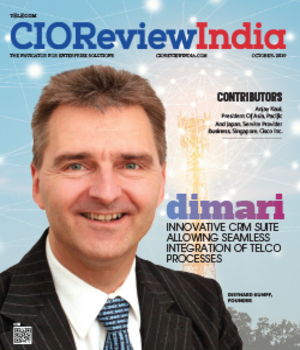
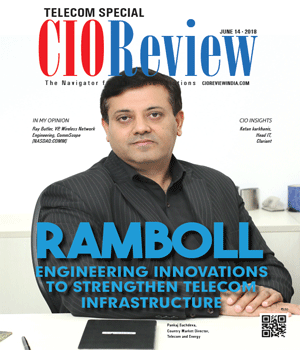
.jpg)
.jpg)

